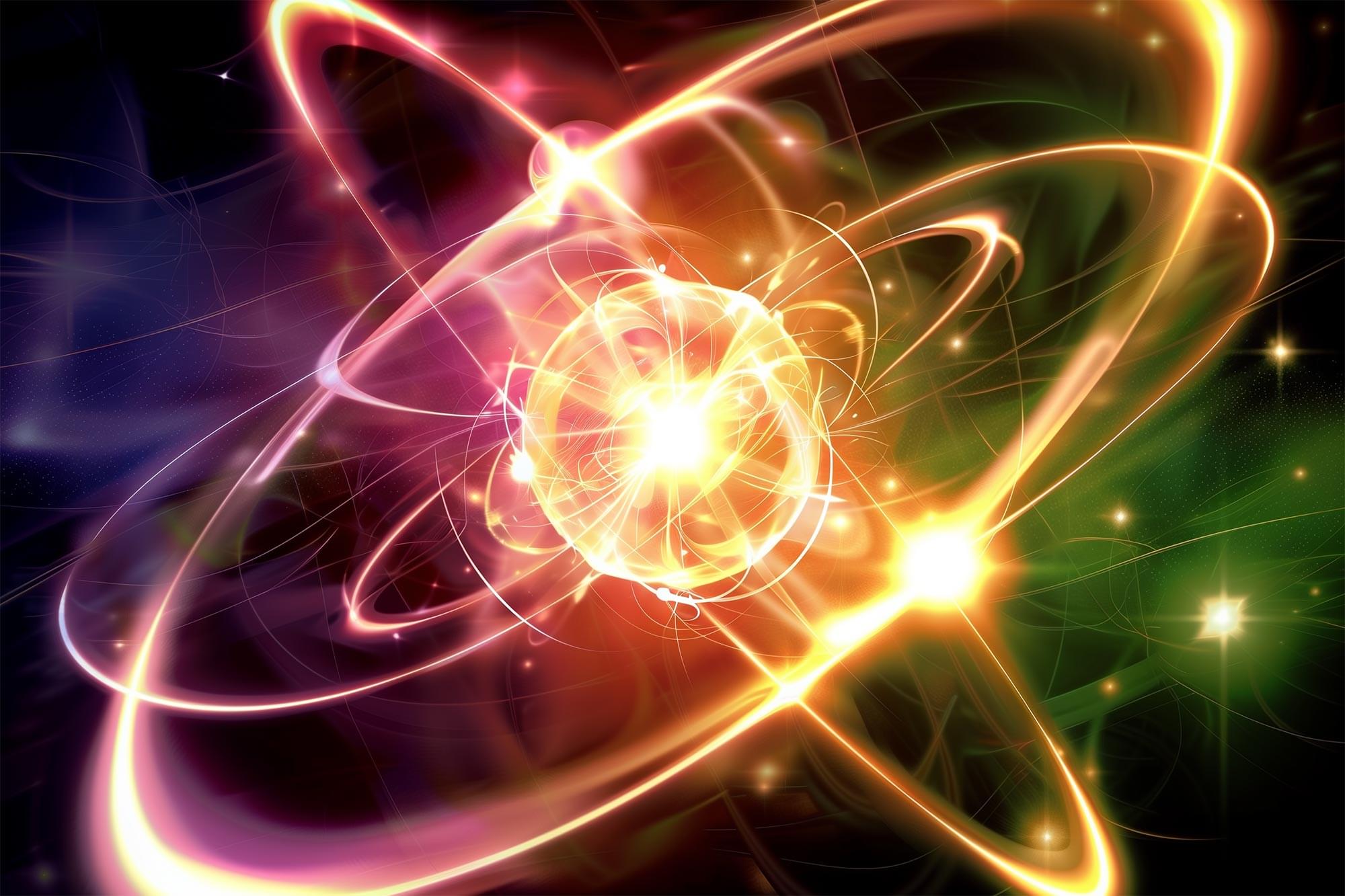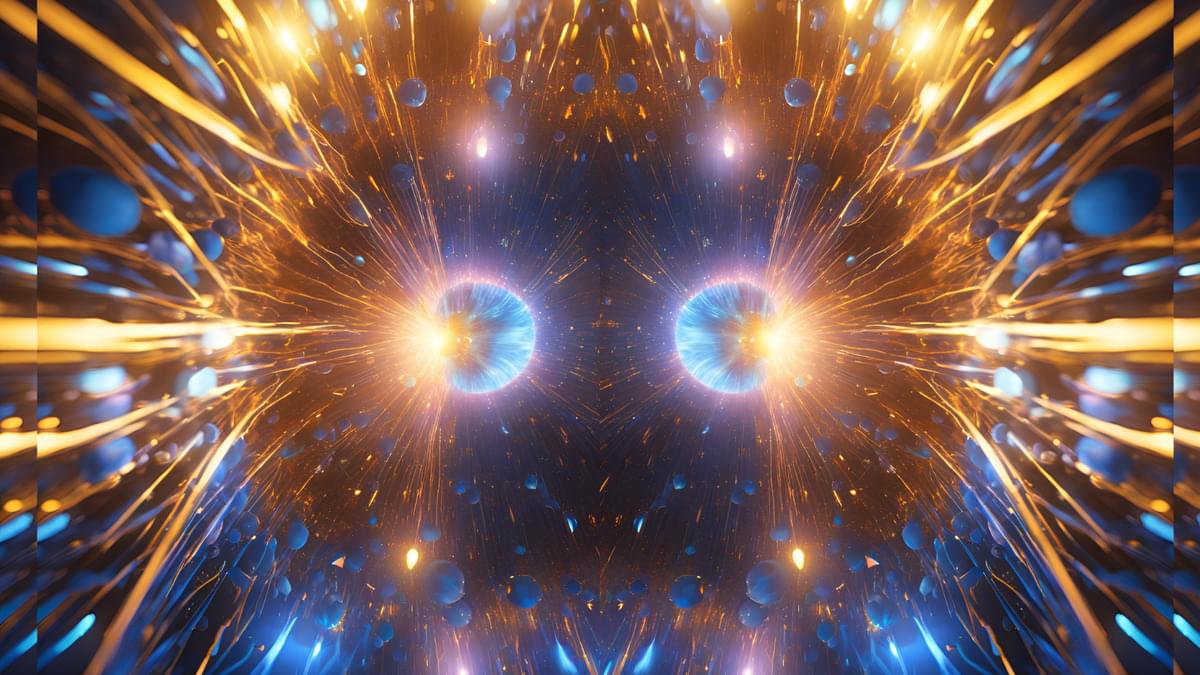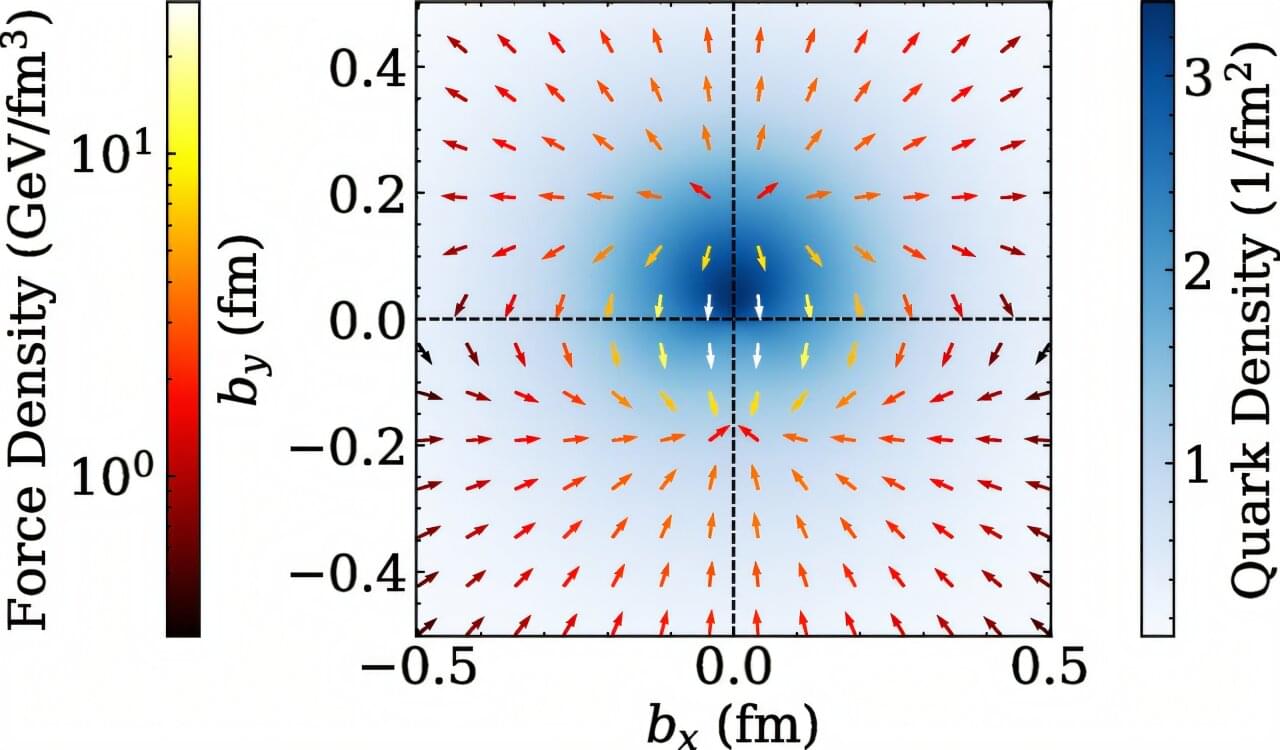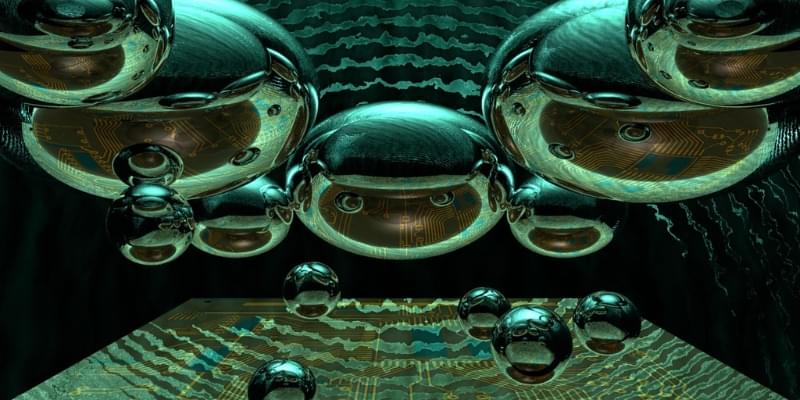Capturing Electron Motion at Unthinkable Speeds
Electrons oscillate around the nucleus of an atom.
An atom is the smallest component of an element. It is made up of protons and neutrons within the nucleus, and electrons circling the nucleus.



An interesting glimpse into the adventurous world of neutrino research in Antarctica!
At McMurdo, Karle must wait for the weather to permit the final leg of the trip. “It is not uncommon to spend several days in McMurdo,” he says. (Karle’s record is 10.) When it’s time, he takes a 3.5-hour flight on a ski-equipped LC-130 aircraft to reach the South Pole. Anyone or anything else that goes to the South Pole must take a similarly tedious route.
There’s a reason scientists have endured the challenges of the climate, the commute and the cost for over half a century—since members of the US Navy completed the original Amundsen–Scott South Pole Station in 1957. Despite all the trouble it takes to get there, the South Pole is an unparalleled environment for scientific research, from climate science and glaciology to particle physics and astrophysics.
This sentiment was echoed by the Particle Physics Project Prioritization Panel in its 2023 report, a decadal plan for the future of particle physics research in the United States. Under its recommendation to “Construct a portfolio of major projects that collectively study nearly all fundamental constituents of our universe and their interactions,” the report prioritized support for five specific projects—two of which are located at the South Pole: cosmic microwave background experiment CMB-S4, the top priority, and neutrino experiment IceCube-Gen2, recommended fifth. Because of the high scientific priority of these projects, the report also urged maintenance of the South Pole site.

Scientists have now mapped the forces acting inside a proton, showing in unprecedented detail how quarks—the tiny particles within—respond when hit by high-energy photons.
The international team includes experts from the University of Adelaide who are exploring the structure of sub-atomic matter to try and provide further insight into the forces that underpin the natural world.
“We have used a powerful computational technique called lattice quantum chromodynamics to map the forces acting inside a proton,” said Associate Professor Ross Young, Associate Head of Learning and Teaching, School of Physics, Chemistry and Earth Sciences, who is part of the team.


UK-based Core Power has announced that it plans to mass produce a fleet of floating nuclear power plants (FNPPs) using advanced reactor design and modular shipbuilding to be anchored off the US coast in about 10 years.
Nuclear power is enjoying something of a renaissance with many countries turning to the atom to meet their energy needs. However, the bottleneck for increasing the nuclear sector isn’t with manufacturing reactors. It’s the civil engineering side of things, with most of the time and cost going to securing real estate for building the foundations and buildings for the plant as well as navigating a bewildering maze of permits, licenses, and planning permissions.
To get around this as well as speed up production, Core Power plans to use Generation 4 reactor design combined with conventional modular shipbuilding methods to crank out floating nuclear plants on an assembly line basis. To reflect this, the company is referring to this as the “Liberty program” in a call back to the famous Liberty ships of the Second World War that were built at a speed of as fast as four days for one hull.
“Retrocausality” by Antonella Vannini and Ulisse Di Corpo Book Link: https://amzn.to/3X6UGhx.
“Time Loops: Precognition, Retrocausation, and the Unconscious” by Eric Wargo Book Link: https://amzn.to/4bdmWVV
“Psychology and Retrocausality: How the Future Determines Love, Memory, Evolution, Learning, Depression, Death, and What It Means to Be Human” by Mark Hatala Book Link: https://amzn.to/4k7kdBj.
The exploration of retrocausality challenges classical views of time and causality, suggesting that effects can precede their causes, influencing our understanding of quantum mechanics, consciousness, and free will. Retro causality offers potential resolutions to issues like non-locality in quantum physics by allowing communication between particles to travel backward in time, which could eliminate the need for higher dimensional configuration spaces and reconcile quantum theory with special relativity. Experimental investigations into retro-causality involve analyzing subtle effects, such as heart rate variations, and require careful methodologies to distinguish genuine retrocausal phenomena from experimental artifacts, while theoretical frameworks explore how retrocausality might address paradoxes and be compatible with concepts like time symmetry.
Thinkers in physics and philosophy are increasingly considering retrocausality as a potential framework to address foundational issues, including the measurement problem and the reconciliation of quantum mechanics with general relativity, potentially impacting our comprehension of time, causality, and the nature of reality itself. Discussions around retrocausality extend into areas like decision theory, existential risk, and the nature of consciousness, with some researchers exploring goal-oriented approaches and the potential for retrocausality to enhance artificial intelligence and our understanding of human cognition. Some notable scientists involved:
• Roger Penrose is noted for his views aligning with retrocausal concepts and his work on the science of consciousness with Stuart Hameroff.
• Yakir Aharonov is cited regarding time in quantum mechanics and weak value amplification.
• Ruth Kastner is mentioned in the context of retrocausality and the transactional interpretation of quantum mechanics.
• Hu Price’s work is at the center of the study of existential risk.
• Ken Wharton is a professor of physics and astronomy working on time-symmetric and causally neutral models of physics.
• Matthew Leifer is mentioned regarding block universe ontological models and frameworks for theories with retrocausality.
• Daniel Rohrlich is mentioned for his work on fundamental aspects of quantum mechanics and his views on retrocausality.
• Richard Feynman is mentioned in the context of interaction with the absorber as the mechanism of radiation.
• Simon Shnoll is mentioned for his work showing that the assumption of normal distribution is only mathematical, and that in life sciences and also in physics it is false.
• David Lucas is mentioned in the context of trapped-ion processing modules.
#Retrocausality #QuantumPhysics #TimeTravel #Physics #Science #Philosophy #Cosmology #Reality #Consciousness #MindBodyProblem #QuantumMechanics #Time Symmetry #Causality #Determinism #Parapsychology #time #physics #cosmology #Timelessness #PhilosophyofTime #Spacetime #GeneralRelativity #TimeCapsules #SuperstringTheory #aideepdive #InfiniteUniverse #podcast #synopsis #books #bookreview #science #quantumphysics #aiart #artificialintelligence #booktube #aigenerated #reality #videoessay #documentary
Quantum computing will never be the same again. Join host Konstantinos Karagiannis for a special onsite interview at Microsoft Azure Quantum labs, where he was invited to see the launch of Majorana 1, the world’s first quantum processor powered by topological qubits. On the day this episode is posted, Nature will release a paper validating how Microsoft was able to create a topoconductor, or new material stack of indium arsenide and aluminum, built literally one atom at a time, to bring quantum particles called Majoranas into usable form. The resulting topological qubits have a unique shape called a tetron and can be accurately measured with lower errors than other modalities. Starting with a 4×2 grid of qubits, this same tiny device will hold 1 million qubits in a few years because of its unique system of wiring and measurement. This interview with Chetan Nayak from Microsoft happened a few feet away from a working Majorana 1 system.
For more information on Microsoft Azure Quantum, visit https://quantum.microsoft.com/.
Read the technical blog here: https://aka.ms/MSQuantumAQBlog.
For photos from the Microsoft labs and other links, visit @konstanthacker on X and Instagram.
Visit Protiviti at www.protiviti.com/US-en/technology-consulting/quantum-computing-services to learn more about how Protiviti is helping organizations get post-quantum ready.
Follow host Konstantinos Karagiannis on all socials: @KonstantHacker and follow Protiviti Technology on LinkedIn and Twitter: @ProtivitiTech.
Visit Microsoft Azure Quantum here to learn about quantum computing for free https://quantum.microsoft.com/?ocid=2… https://quantum.microsoft.com/en-us/e… Topological quantum computing is a brand new form of quantum computing being developed by Microsoft as they enter the race to build the world’s first useful quantum computer. In this video I visited Microsoft’s quantum labs to see how they are making their topological quantum computers and learn how topology helps their quantum devices avoid noise by harnessing the power of Majorana quasiparticles which are made from an exotic form of superconductivity where the electrons behave like there is a Majorana particle there which has the special properties of topology.
Get My Posters Here.
For North America visit my DFTBA Store: https://store.dftba.com/collections/d… the rest of the world go to my RedBubble Store: https://www.redbubble.com/people/Domi… I have also made posters available for personal or educational use which you can find here: https://www.flickr.com/photos/9586967… Some Awesome People And many thanks to my $10 supporters and above on Patreon, you are awesome! Join the gang and help support me produce free and high quality science content: / domainofscience Tut Arom Anja Jason Evans machinator rimor Mirik Gogri Eric Epstein Sebastian Theodore Chu My Science Books I also write science books for kids called Professor Astro Cat. You can see them all here: https://flyingeyebooks.com/book/profe… http://profastrocat.com Follow me around the internet http://dominicwalliman.com
/ dominicwalliman
/ dominicwalliman Credits Writer, art, animation and edited by Dominic Walliman I use Adobe Illustrator and After Effects for the graphics (for the many people who ask smile References “InAs-Al hybrid devices passing the topological gap protocol” https://journals.aps.org/prb/abstract… “A cryogenic CMOS chip for generating control signals for multiple qubits” https://www.nature.com/articles/s4192… Topological qubit noise levels — “Assessing requirements to scale to practical quantum advantage” chrome-extension://efaidnbmnnnibpcajpcglclefindmkaj/ https://arxiv.org/pdf/2211.07629 Chapters 00:00 Topological Quantum Computing 02:01 Topology Explained 04:47 Resilience to Noise 05:51 Anatomy of a Quantum Computer 07:05 Chip Fabrication and Lab Tour 09:41 How to Build a Quantum Computer 11:21 Topological Quantum Computing Lego Explainer 15:40 Microsoft’s Results 17:50 Majorana Particle Explained 21:31 Sponsor Message 23:03 Thanks Patrons!
For the rest of the world go to my RedBubble Store: https://www.redbubble.com/people/Domi…
I have also made posters available for personal or educational use which you can find here: https://www.flickr.com/photos/9586967…
Some Awesome People.
And many thanks to my $10 supporters and above on Patreon, you are awesome!
Join the gang and help support me produce free and high quality science content:
/ domainofscience.
Tut Arom.

Physicists have performed a groundbreaking simulation they say sheds new light on an elusive phenomenon that could determine the ultimate fate of the Universe.
Pioneering research in quantum field theory around 50 years ago proposed that the universe may be trapped in a false vacuum — meaning it appears stable but in fact could be on the verge of transitioning to an even more stable, true vacuum state. While this process could trigger a catastrophic change in the Universe’s structure, experts agree that predicting the timeline is challenging, but it is likely to occur over an astronomically long period, potentially spanning millions of years.
In an international collaboration between three research institutions, the team report gaining valuable insights into false vacuum decay — a process linked to the origins of the cosmos and the behaviour of particles at the smallest scales. The collaboration was led by Professor Zlatko Papic, from the University of Leeds, and Dr Jaka Vodeb, from Forschungszentrum Jülich, Germany.